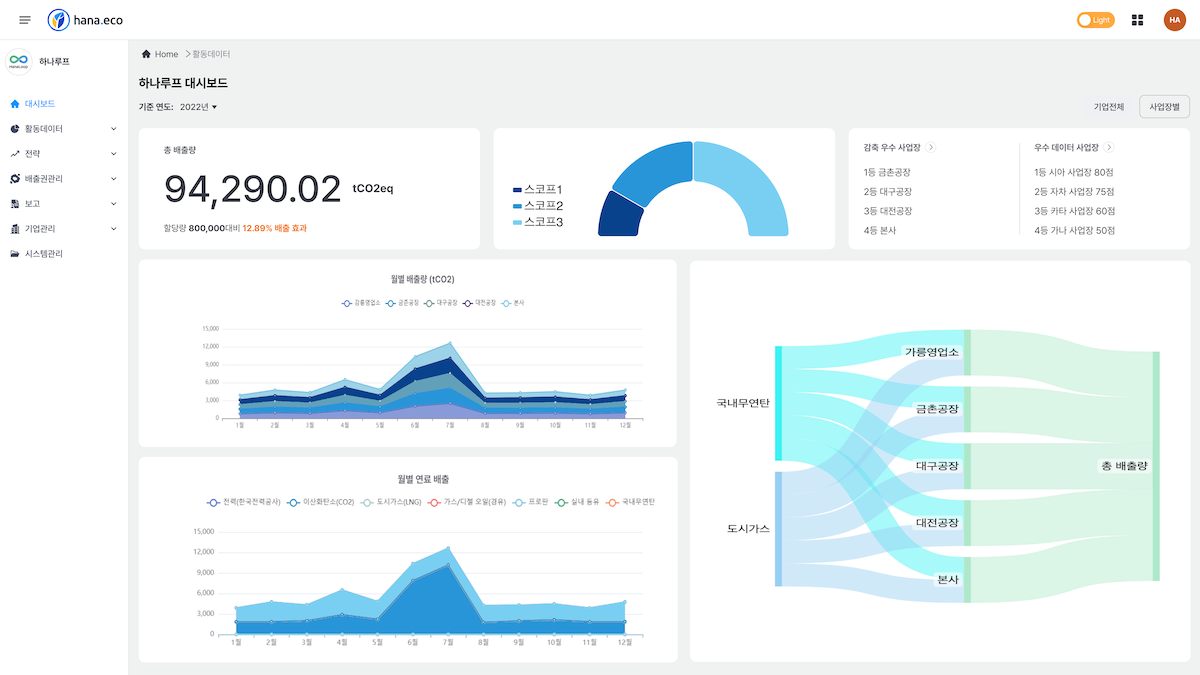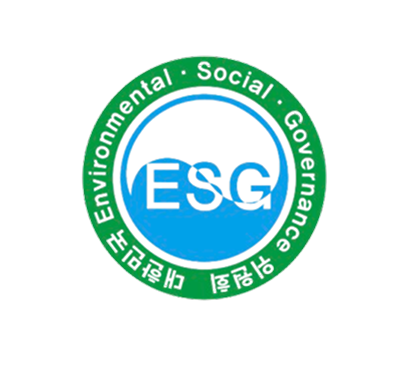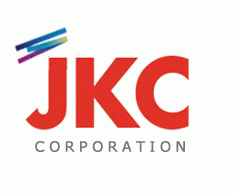Optimize Carbon Footprint Management with AI-Powered
Hana.eco
Take proactive control of your carbon emissions, reduce energy costs, mitigate risks, and bolster your resilience to climate change.
Simplify compliance with EU CBAM, IFRS/ISSB, and ESG reporting requirements to stay competitive in a sustainable future.

Why Does Your Company Need to Manage Carbon?
Compliance to Climate and Environmental Regulations
Domestic and international climate regulations are becoming increasingly stringent
- Emissions Trading Scheme, Target Management System
- EU Carbon Border Adjustment Mechanism (CBAM), Battery Regulation, Corporate Sustainability Due Diligence (CSDDD)
- California’s SB253/SB261
Requests from Customers Undergoing ESG and Carbon Neutrality Efforts
Your customers are managing their supply chains (Scope 3), and you need to respond to their needs
- Scope 1, Scope 2 data
- Scope 3 and value chain emission data
- Product Carbon Footprint (PCF)
Demands from Investors and Shareholders for Carbon Disclosures
You need to address materiality disclosure requirements for investors, lenders, and board members
- IFRS S1, S2
- CDP
- GRI and other Sustainability Reports
Improve Branding to Stay Competitive in the Market
There is a growing trend of eco-conscious consumers. Without proper data, greenwashing could negatively impact your business
- Transparent Environmental Impact Disclosure
- Sustainability Metrics Disclosure
- Commitment to SBTi
Hana.eco: A trusted platform you can rely on!

Hana.eco is a leader in carbon management, being the first company to receive verification from Lloyd's Register (LRQA) for compliance with both the Korea Emissions Trading Scheme and the EU Carbon Border Adjustment Mechanism.
Compliance with the EU CBAM
Carbon Border Adjustment Mechanism
- Product Management
- Precursor (Raw Material) Supply Management
- CBAM Report Generation
- Emission Factors Catalog
Compliance with the Korea ETS
Korea Emissions Trading System
- Verification-Grade Data & Evidence Data
- Carbon Accounting
- Emission Target Setting
- Target Management
Support for IFRS(TCFD) ISSB / CDP / GRI
Climate Normatives, Frameworks and Standards
- Management of Data Required in Standard
- Environment Management Governance
- Risk Management
- Emission Scenario Analysis
ESG & Scope 3 Management
ESG Data Including the Value Chain
- Qualitative Data Management
- Partner (Supplier) Management
- Industry Standard Emission Factors
- Supplier specific, Hybrid, and Spend-based calculation methods
PCF Management
Product Carbon Footprint
- Calculation of LCA Carbon Footprint
- Calculation of Emission in Processes
- Management of Embedded Emissions in Raw Materials
- Cost Efficiency Analysis
HanaLoop, your trusted partner in climate compliance
We help you navigate the complex and evolving landscape of climate regulations and disclosure requirements with confidence. HanaLoop’s digital sustainability solution, backed by our network of specialists, streamlines compliance, future-proofs your business, and unlocks opportunities in the sustainable marketplace—all tailored to meet your company’s unique needs.
Numerous reporting standards—such as TCFD, SASB, CDSB, Integrated Reporting (IR), and Value Reporting (VR)—have been consolidated into the International Financial Reporting Standards (IFRS) Foundation’s ISSB S1 and S2. Starting in 2025, companies in various jurisdictions will be required to implement these standards.

The EU’s Carbon Border Adjustment Mechanism (CBAM) came into effect in late 2023, initially targeting steel, aluminum, and four other key sectors. Other regions, including the US, UK, and Japan, are considering similar systems. As a result, analyzing and reducing carbon emissions has become essential for businesses engaged in international trade.

The scope of carbon emissions management in business activities has expanded to cover the entire value chain, making it essential to account for the emissions of partners, supply chains, and customers. To comply with regulations and disclosure requirements aimed at carbon reduction—such as IFRS, CDP, PCAF, and CSDDD—accurately calculating Scope 3 emissions is becoming increasingly important.













